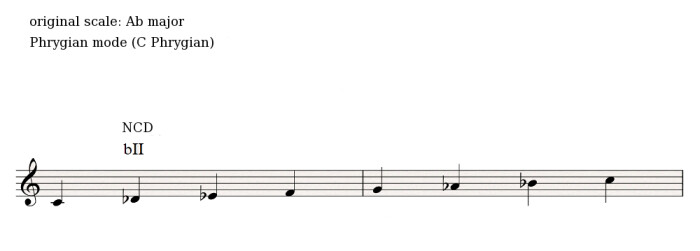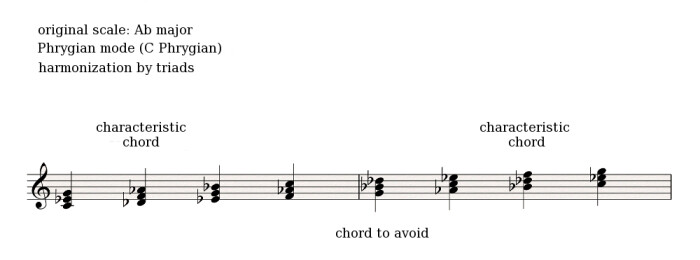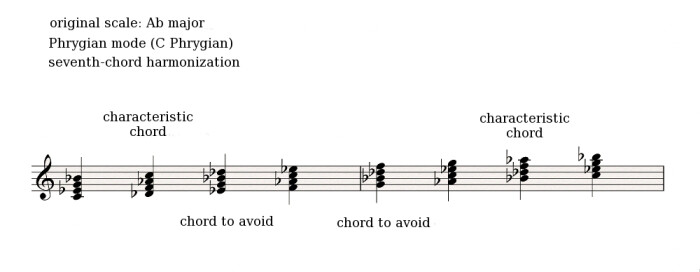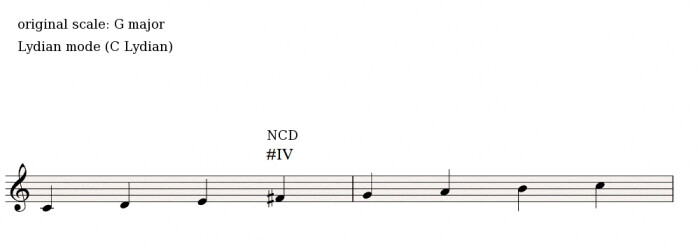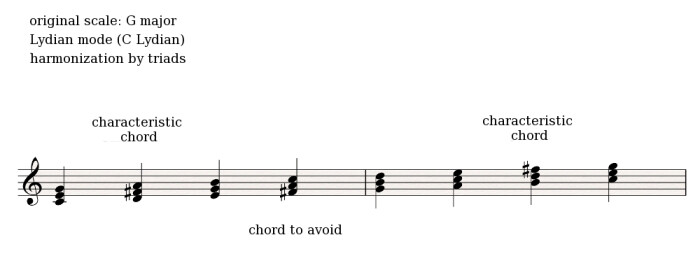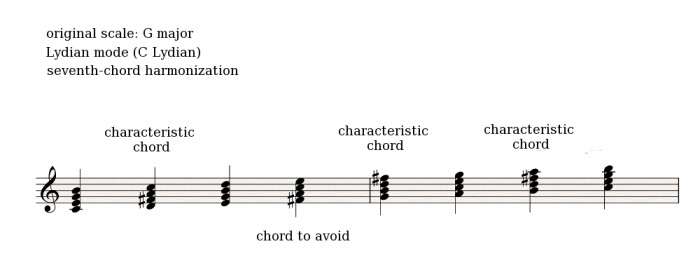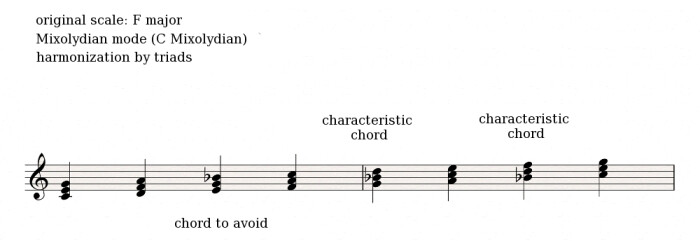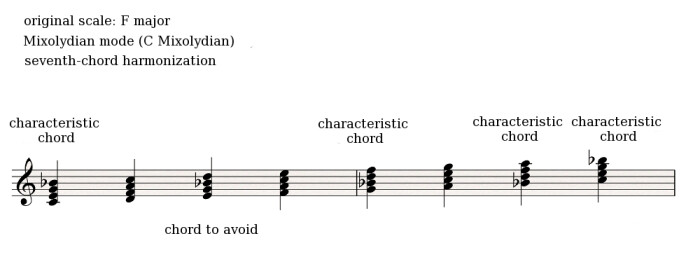In the previous article we started to discuss the specific rules that apply to the different harmonic modes. Today we'll continue with the Dorian, Lydian and Mixolydian modes. If you just took up reading the series, I recommend you to refer to article 46 to understand better what I'm talking about here.

The Phrygian mode



The Phrygian mode is the one that starts from the third degree of the scale. ]It’s associated to a minor chord: III minor of the original scale. Its natural characteristic degree is the II degree minor. Its characteristic chords are those of degrees II, V (which should be avoided, see article 50) and VII. As with all modes, you should avoid the cadences that are characteristic of the original scale.
In this case, they are:
- bIIM7-bVIM7, which could be interpreted as the IVM7-IM7 plagal cadence of the original scale
- bVIImin7-bIII7, which could be interpreted as a IImin7-V7 semi-cadence of the original scale
- bIII7-bVIM7, which could be interpreted as the V7-IM7 perfect cadence of the original scale
Also note that the bIII7 chord is not easy to use within this mode, and you should try to avoid it like that of degree V. Generally speaking, dominant chords should be handled with care, as you’ve seen all along this series.
Furthermore, the Phrygian mode is often chosen due to its “Hispanic” sound – think Flamenco music.
The Lydian mode



The Lydian mode is the one that starts from the fourth degree of the scale. It’s associated to a major chord: IV major of the original scale. Its natural characteristic degree is the IV degree. Its characteristic chords are those of degrees II, IV (avoid) and VII.
The cadences you should avoid are the following:
- VM7-IM7 which could be interpreted as a I-IV motion of the original scale, the progression of the most important degrees in the tonal system (see article 5), which carries the risk of establishing a key
- II7-VM7, which could be interpreted as the V7-IM7 perfect cadence of the original scale
Once again, the seventh dominant chord, which is in the II degree in this case, might cause problems. You can replace it with its triad version which doesn’t call that much for a resolution towards the tonic of the original scale.
The Mixolydian mode



The Mixolydian mode is the one that starts from the fifth degree of the scale. It’s associated to a major chord: V major of the original scale… and especially V7 of the original scale, which is its dominant chord! This makes the Mixolydian mode the most difficult to use after the Ionian if you want to avoid going back to the tonal system.
Its natural characteristic degree is the VII degree minor. Its characteristic chords are those of degrees III (avoid), V and VII. The main cadence you should avoid is I7-IVM7 which could be interpreted as the V7-IM7 perfect cadence of the original scale.
In the forthcoming articles, we’ll study the Aeolian mode and the very particular case of the Locrian mode. You will also learn about modal cadences, altered modes and lots of other exciting things, I promise!
Read you soon!



